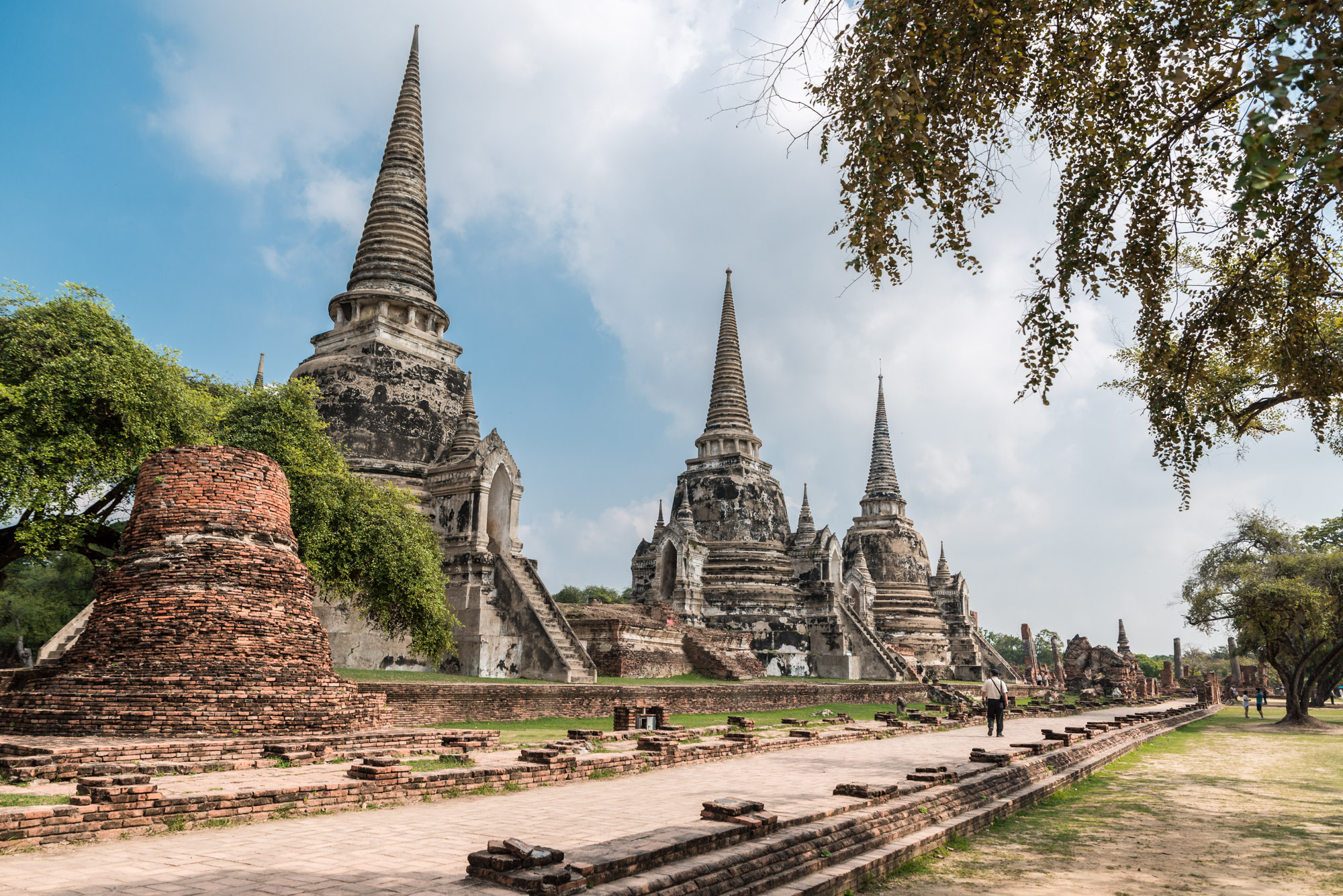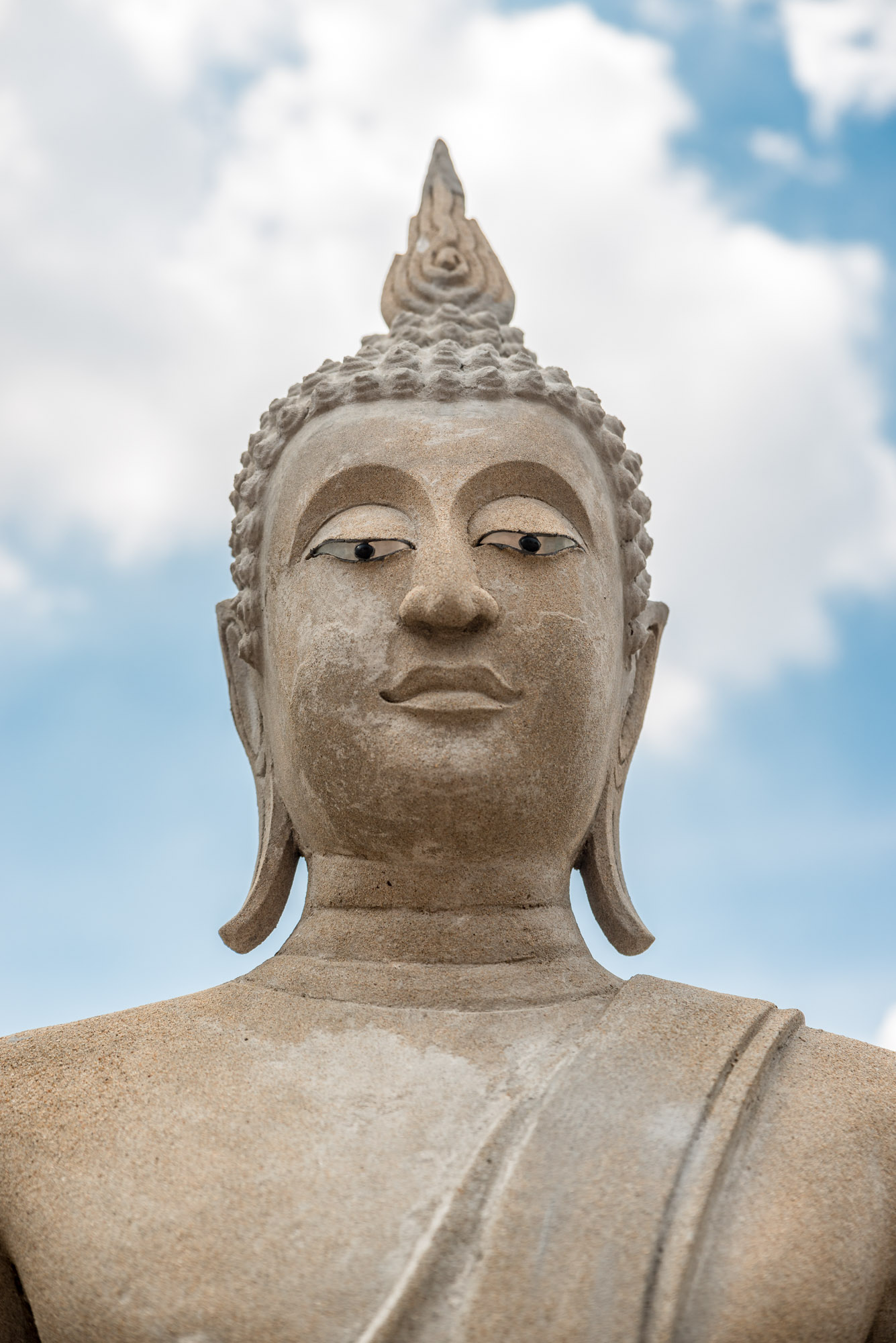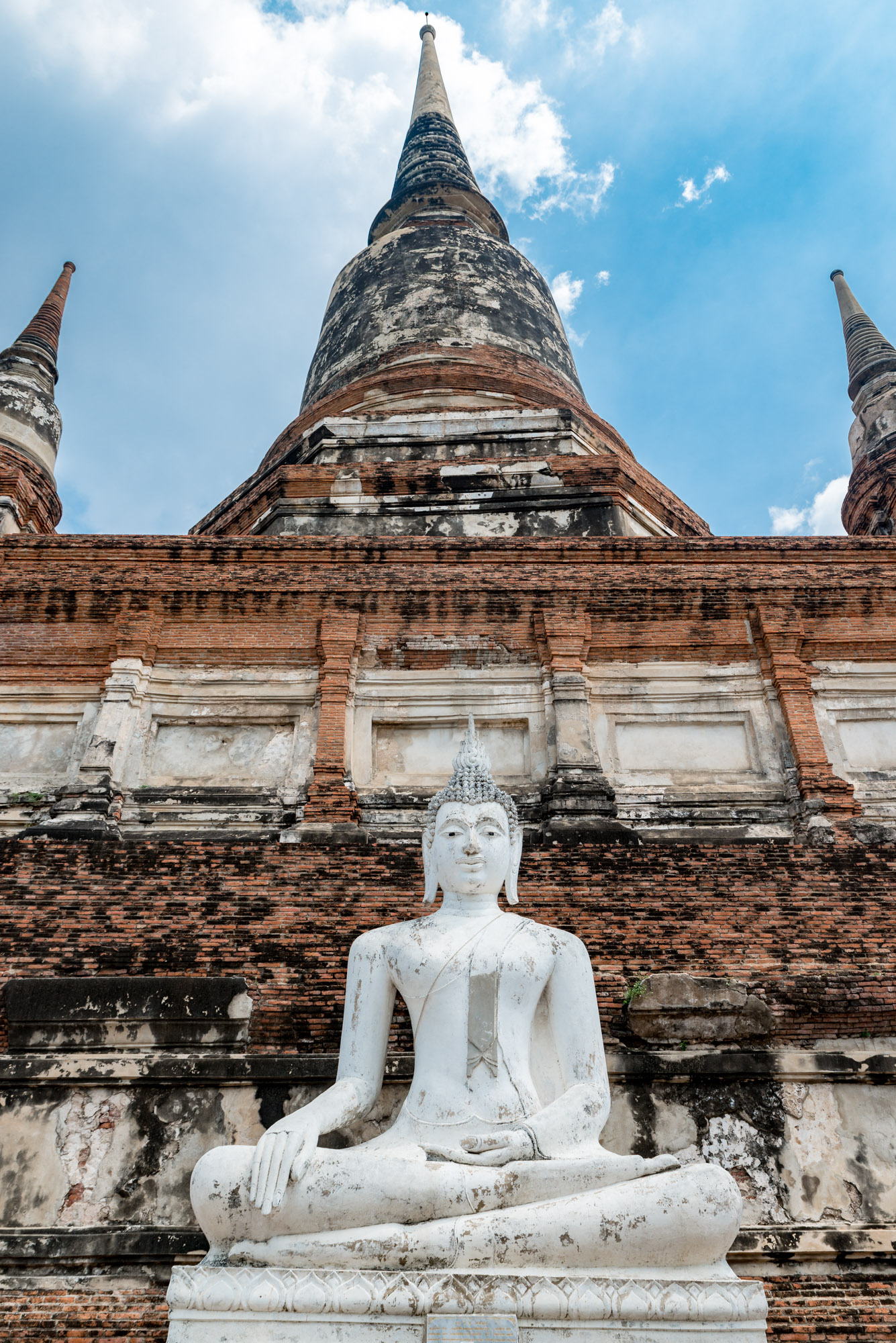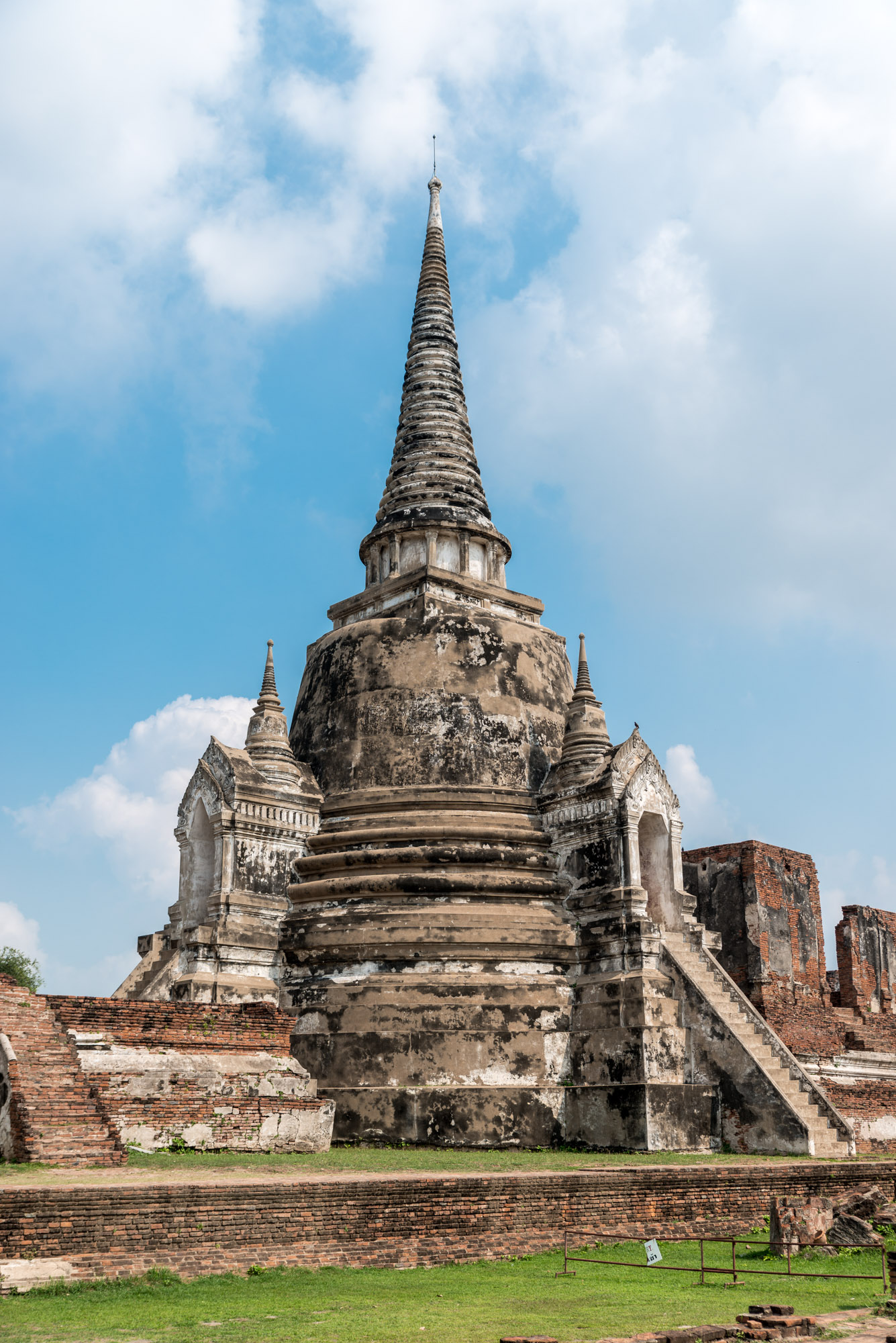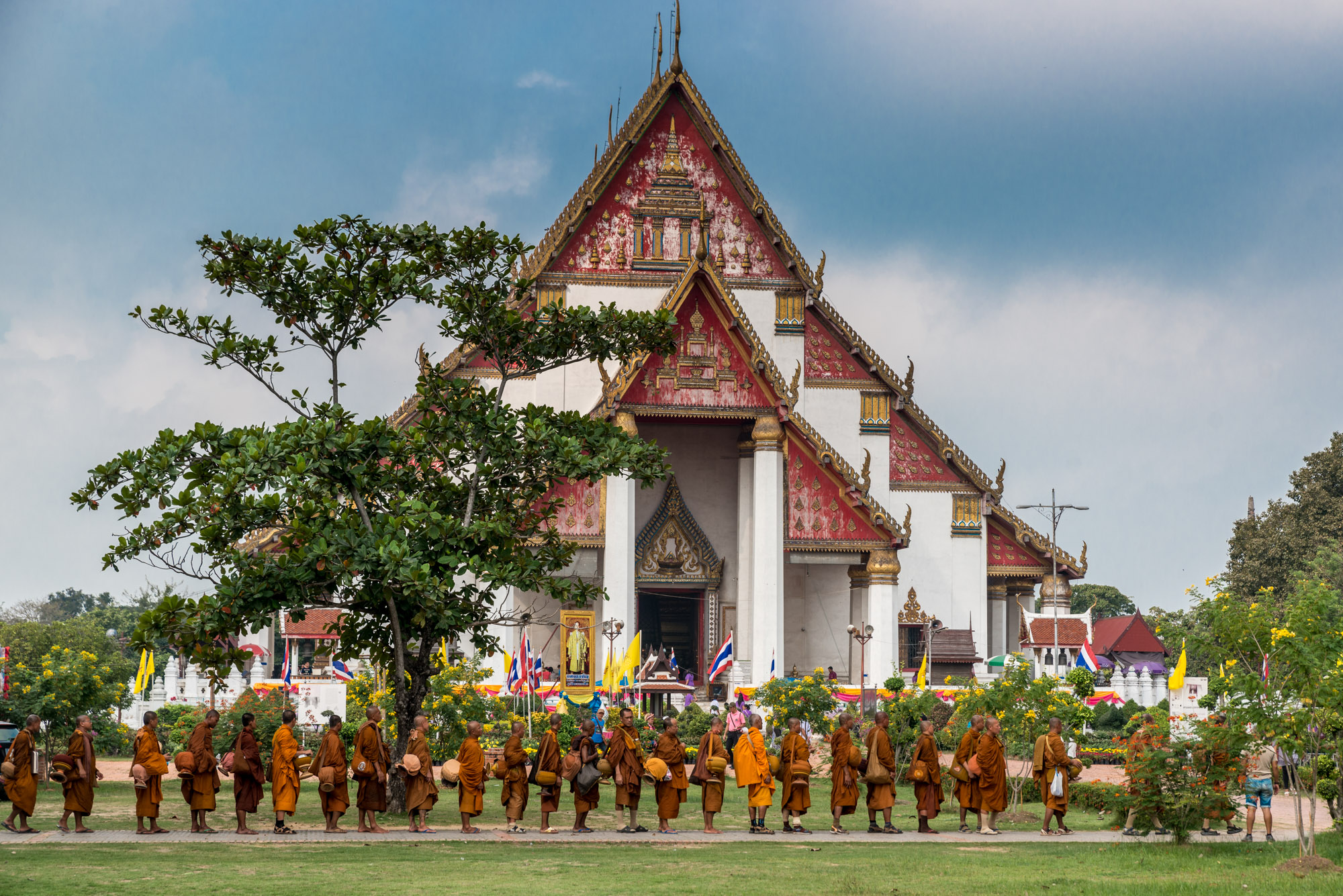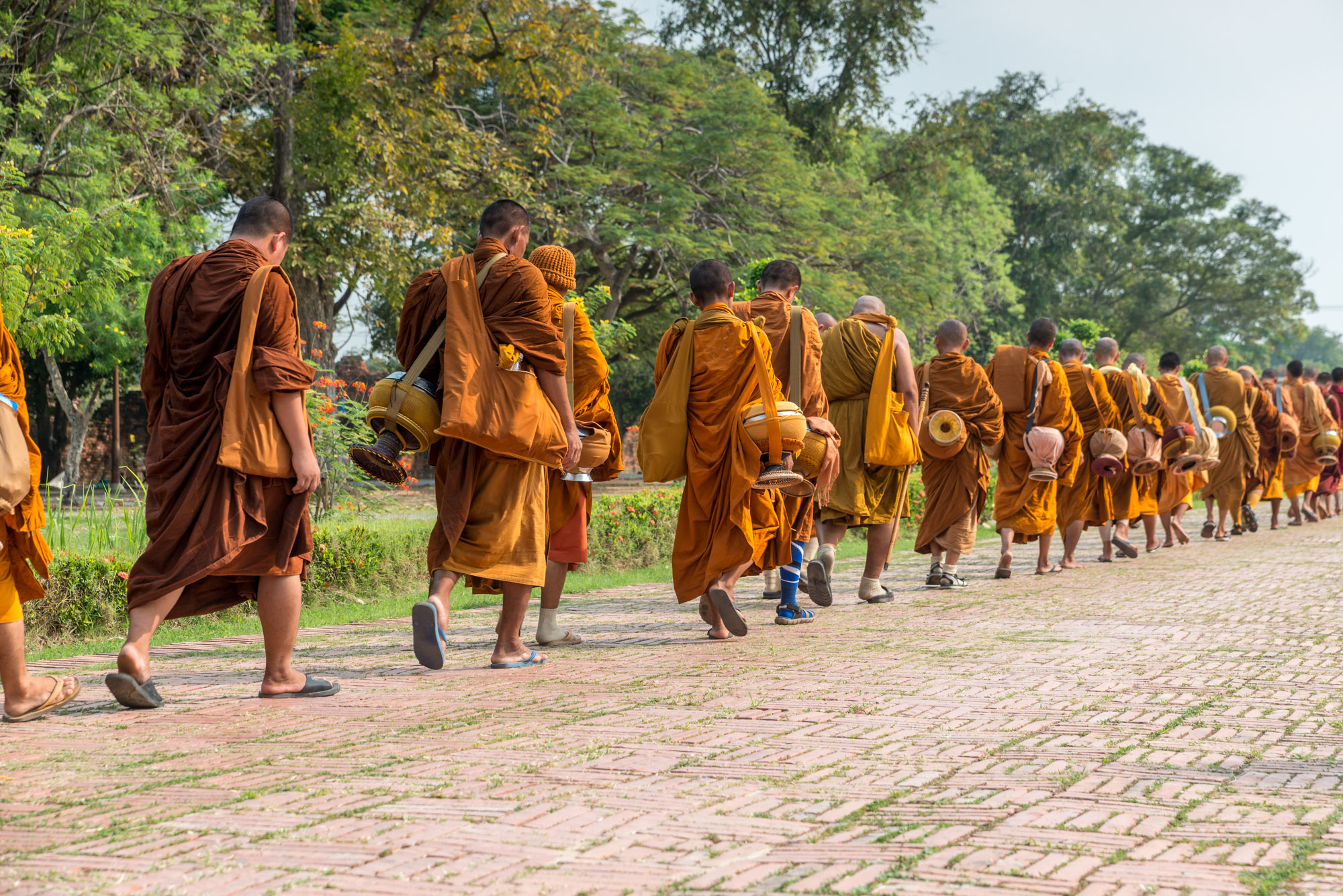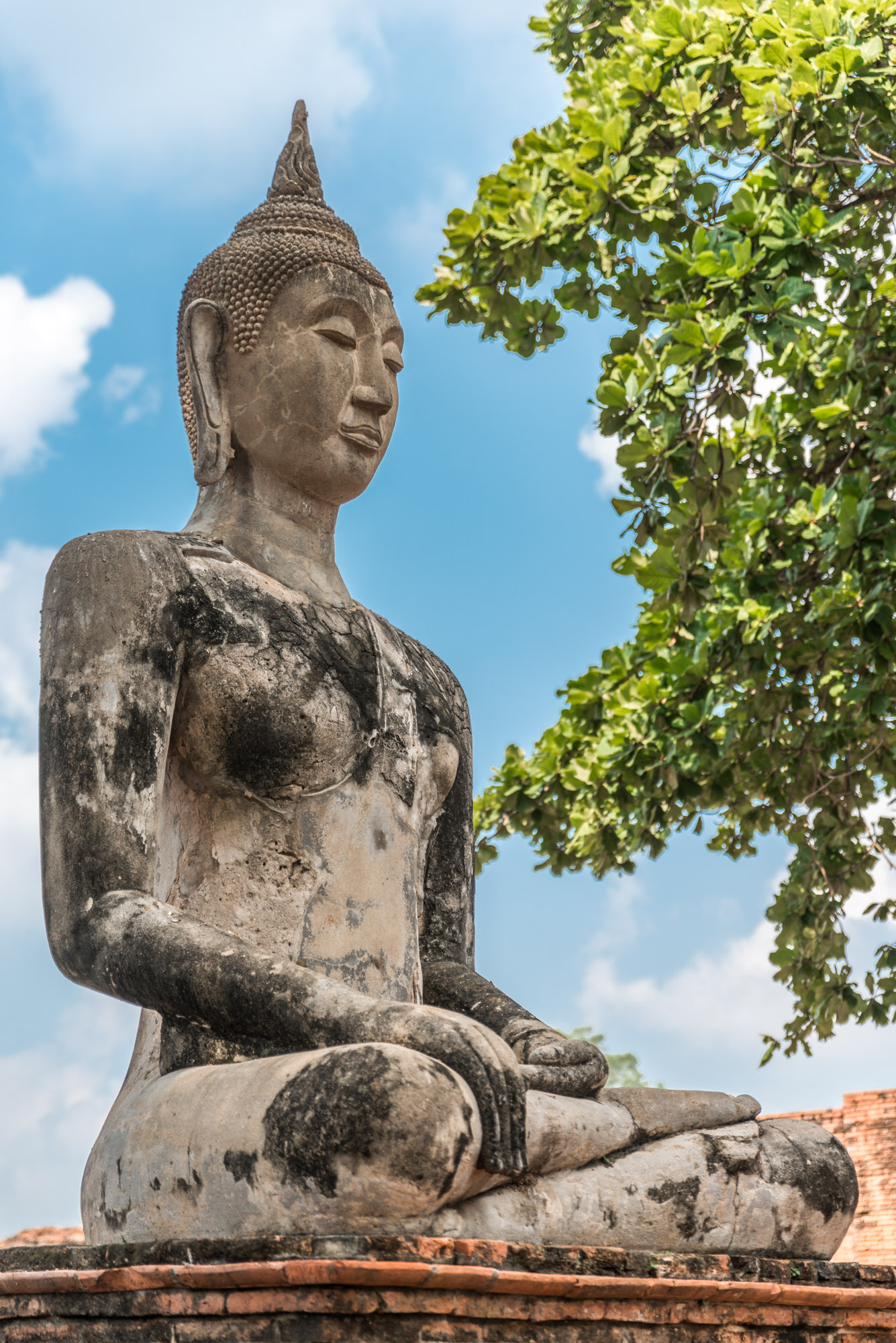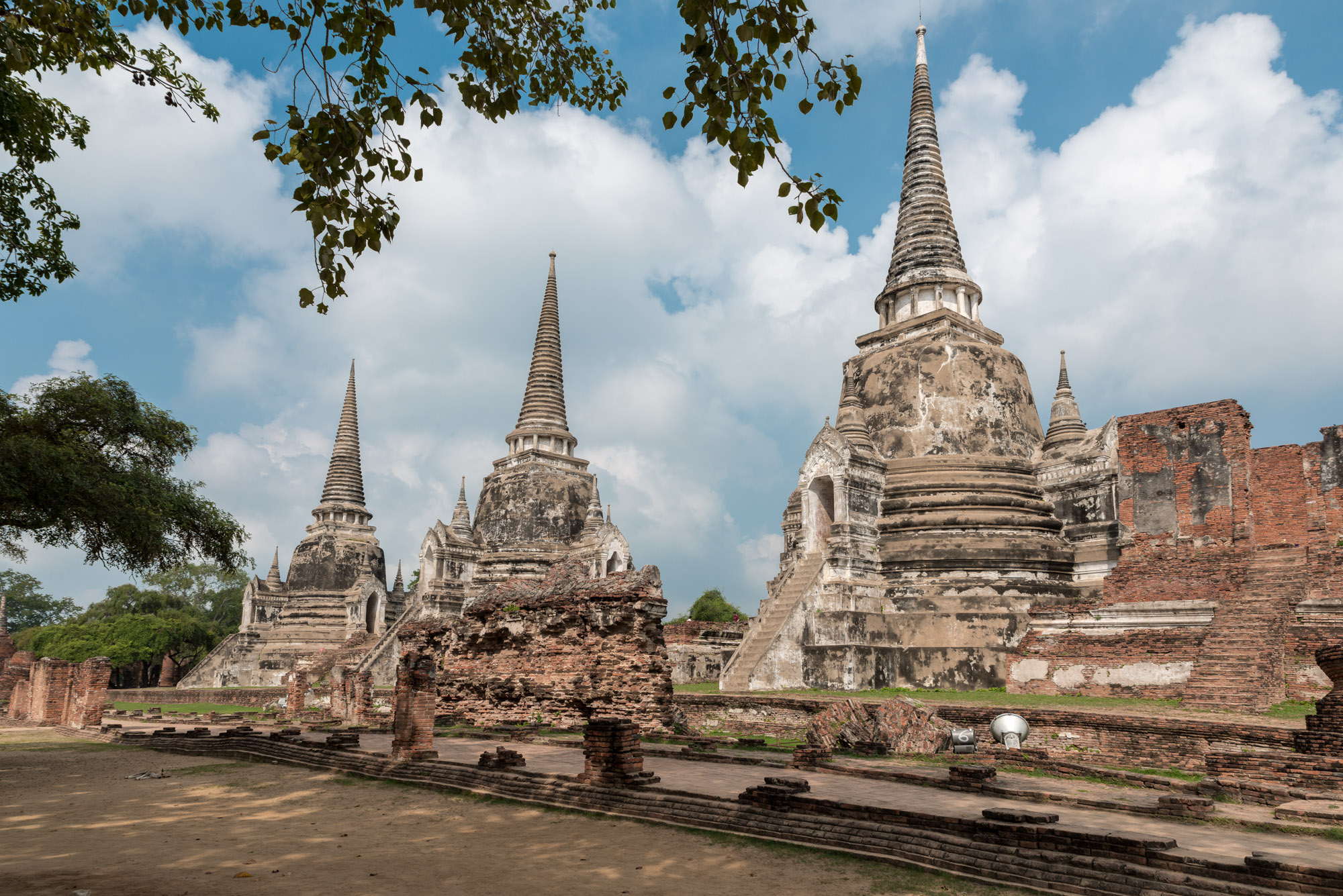THE HISTORIC CITY of AYUTTHAYA
By Ian Robert Knight
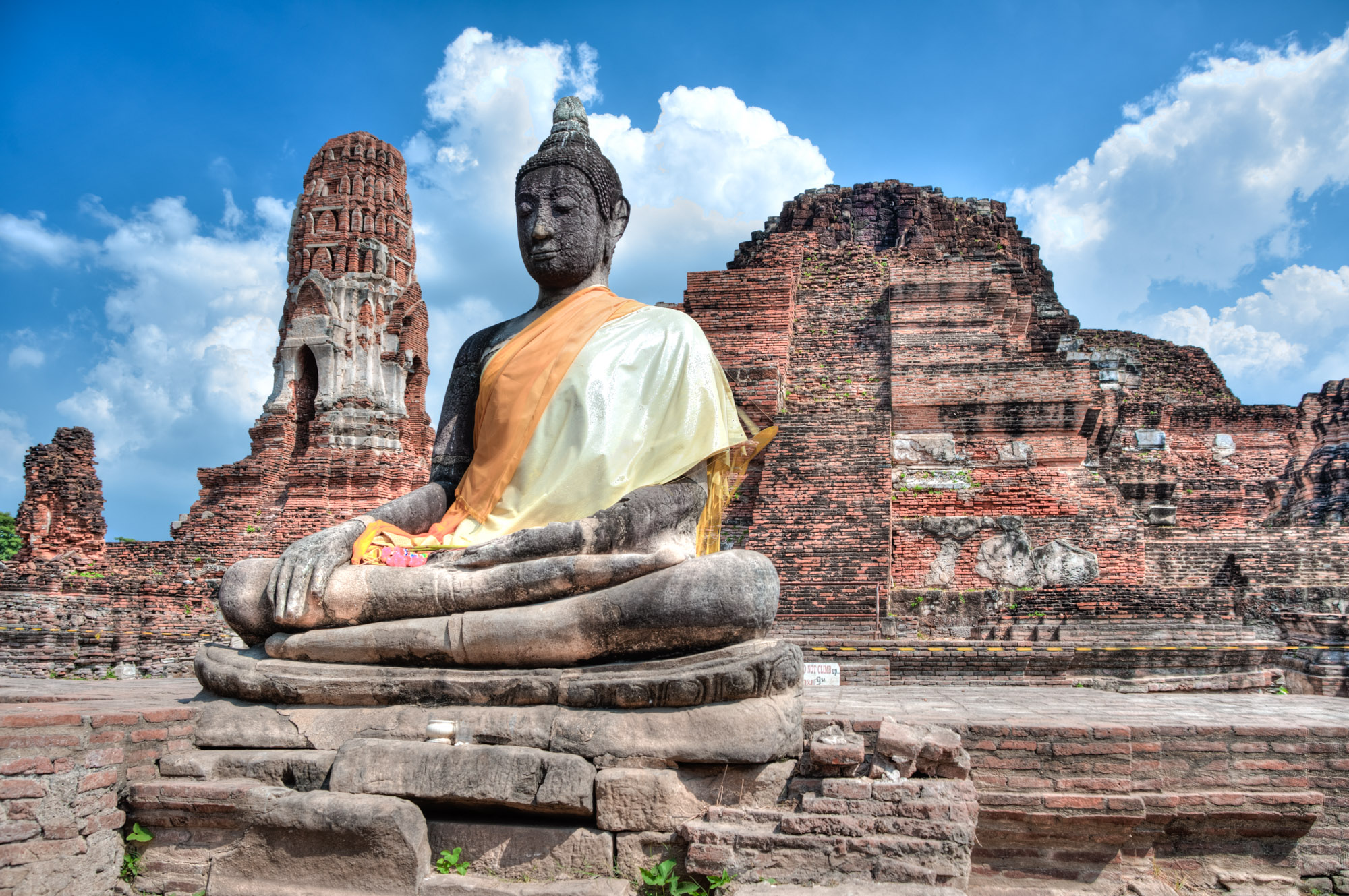
About 80 km north of the city of Bangkok, lies the Historic City of Ayutthaya. It’s one of the most important historical sites in Thailand. The City of Ayutthaya (pronounced uh-yoo-tie-yah), now mostly in ruins, was the second capital city – after Sukhothai – in what was once the Kingdom of Siam. It was founded in 1350 and remained an important trading city until the mid 1700’s.
Siam and Burma
Siam, which changed its name to Thailand in 1939, was ideally located in the center between China, India and the Malay Peninsula. The capital city of Ayutthaya commanded a large trading empire. The city itself is located on an island surrounded by the confluence of three rivers. Because it was far enough from the sea, it was difficult for foreign fleets to invade, but not impossible. In 1767, Burma (now modern day Myanmar) invaded and burnt the city to the ground.
Largest City
At one point, Ayutthaya was considered the largest city in the world, by population. Over 1 million people resided in the capital, including the royal family of King Taksin. There were temples covered in gold, a well-planned layout of canals and a grid pattern for city streets that is still visible today. All that remains now are the structures that were made from stone, although even they are not completely intact. After the fall of Ayutthaya, the capital city was moved south to Thonburi, which is now part of Bangkok.
UNESCO World Heritage
The Historical City of Ayutthaya, formally known as Phra Nakhon Si Ayutthaya, is now a UNESCO World Heritage Site. This honor brings a level of notoriety to the city, and provides some protection of its historical nature. A day trip from Bangkok is usually on the list for most visitors in Thailand, and well worth their time.
There are quite a lot of ruins to see during a visit. Most of them are easy to walk around, and even climb upon. The massive stupas in the ruins of the royal palace are significant structures, even today. At the time, the palace was only used for religious ceremonies for the royal family. Today, images of the stupas are the commonly used to market the modern city of Ayutthaya.
Still in Use
There is a working temple on the grounds as well. If you time it right, you’ll see hundreds of saffron-robed monks praying and chanting in and around the temple. The current temple building houses a massive bronze sculpture of Buddha, said to have been created in the early 1500’s. Be sure to check that out.
Tips for photographing the Historic City of Ayutthaya:
- Be sure to arrive in the morning, as the day can get quite hot.
- Use your widest lens to capture the large structures.
- Often, monks in colourful robes will be around, letting you Inject some colour into the photos.
- There are elephants in the area, so try to include them in your photographs.
- Take your time, and let the crowds pass through your frame. Patience and a tripod help.
- A polarizer filter will improve contrast and colors in your images too.
Because the Historic City of Ayutthaya is too important to skip, we include it in our schedule when we visit Thailand. It’s very often a highlight of the trip for most people. Join us in Thailand, on either our spring or fall excursions. To get your appetite ready, maybe check out the Five Best Dishes to Eat in Thailand while you’re getting packed.
